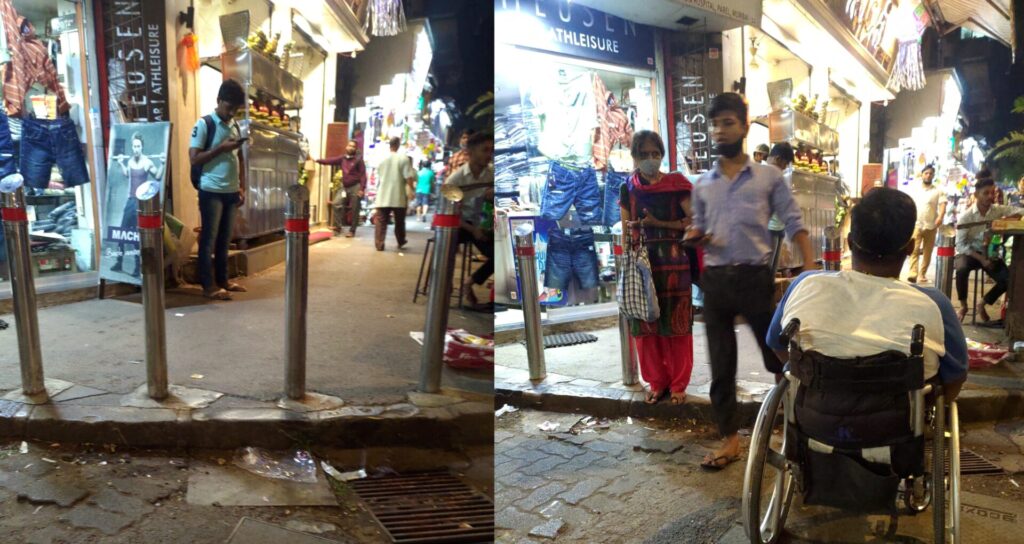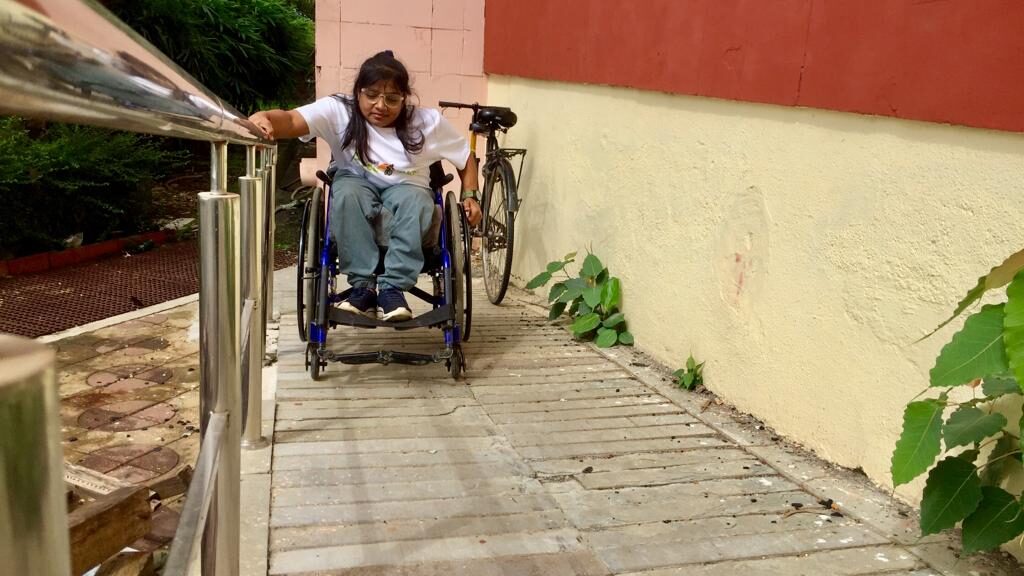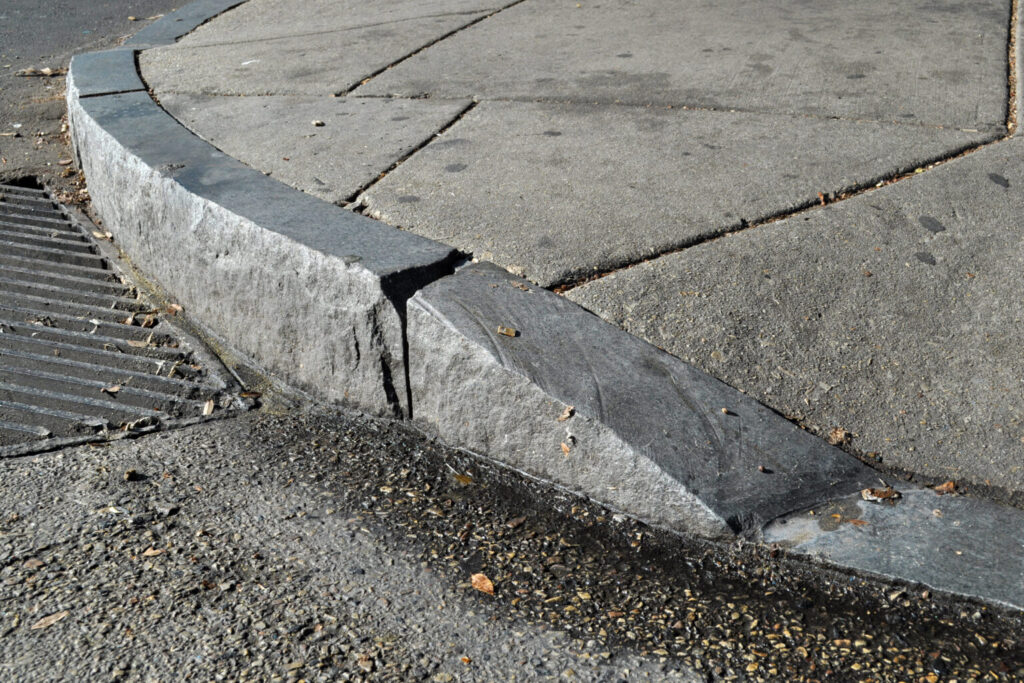Rahul Ramugade, a 33-year-old Mumbaikar, who is paralysed waist down, is a National Para Swimmer. He has been raising the issue of mobility for the differently-abled people. Rahul can recount countless instances of exclusion and rejection from various public places and institutions as they were simply not accessible for the wheelchair-bound people.
Rahul’s dedication and passion for his sport are unwavering. Yet, many swimming pools across the city remain off-limits to him. The absence of ramps and other facilities required for the differently-abled swimmers, deprives him of the opportunity to train well.
This is just one of the many challenges faced by differently-abled Mumbaikars.
Able-bodied people take many things for granted on a daily basis, such as going to a cafe or taking some fresh air in a park. However, the accessibility to these ‘privileges’ is a life-long battle for some.
From the absence of lifts and ramps to unexpected obstacles like additional steps and obstructive poles, navigating the city poses many hurdles. Encroached footpaths and inaccessible doorways add to the struggle.
Many schools, colleges, residential buildings, cafes, famous tourist spots and even certain corporate establishments remain inaccessible for differently-abled individuals in this mega city.
Infrastructure excludes differently-abled
According to the NSSO survey, the disability classification in India, is based on distinct population categories: rural and urban, further broken down by gender—male and female. Disabilities are categorised into various types, encompassing seeing, speech, hearing, movement, and mental impairments.

Ravindra Singh, a wheelchair bound differently-abled person, who runs his own business, recounted an incident that left him disturbed. On a visit to a corporate company, to speak about accessibility for the differently-abled citizens, ironically, he was not able to reach the office floor in the regular lift, because it was not wheel-chair friendly and he had take the service lift instead. “It was a very disappointing moment for me,” he recalled.
Regarding inefficient infrastructure, Ravindra tells how some ramps do not have the side bars to hold while using the ramp. “We do not like to ask people for help every time, we want to feel respected and independent,” he says.

Anu Chouhan, who is wheelchair bound, had to move out of her family home, to an apartment to get access to a washroom. “Till a person doesn’t experience a disability themselves, nobody really understands the pain,” says Anu, adding that the financial burden is hard to manage.
Many people, who spoke to Citizen Matters, were not comfortable to discuss the difficulties they face in their personal lives with family and friends. However, it was evident that the differently-abled people and their families found it hard to cope with the financial burden and mental stress.
Read more : How the pandemic affected persons with disabilities and why we should care
Lack of advancement in disability rights
According to the United Nation’s Department of Economic and Social Affairs, the States must ensure equal access for persons with disabilities to the physical environment, transportation, information, technology, and public services, fostering their independence and full participation.
In 2015, the government initiated the Accessible India Campaign with the aim of ensuring universal accessibility for individuals with disabilities across buildings, transportation, and communication technology. Yet, the postponement of deadlines has hindered the realisation of these objectives. The target to ensure full accessibility of services lapsed in 2019, and the deadline for making public spaces accessible concluded on June 15, 2022. Instead of enforcing stringent measures for non-compliance, the Central Advisory Board (CAB) on disability, the highest policy-making body, contemplated extending the accessibility timeline for states until March 2024.
At the city level, the Brihanmumbai Municipal Corporation (BMC) this year announced a total estimated budget for the fiscal year 2023-24, which is Rs 52,619.07 crore. Out of this budget, which is more than some of the state budgets of the country, the BMC, allocated ₹25.32 crore, under the scheme of financing differently-abled persons of the city. It is less than 0.05% of the total budget.
The schemes include free travel by BEST buses. “The government allocates a budget every year but whether it is being used well or not, is never questioned. So, instead of spending money on free tickets for buses, which are not even disabled-friendly, the budget allocation should focus more on making the city accessible by setting up ramps and other equipments in the right places,” says Rahul, who has written multiple letters to authorities of institutions.
Accessibility helps everyone
In December last year, after spraining his left leg, which left him immobilised with a cast, Lok Sabha MP Shashi Tharoor had to use a wheelchair to get around. This experience made him realise the lack of disabled-friendly infrastructure in not just everyday life, but also in important buildings like the Parliament House. In his tweet, Tharoor pointed out the Parliament building had only one entrance with a ramp.

Sanket Khadilkar, a clinical physiotherapist, says inclusive design helps everyone. At some juncture in life, everyone encounters some form of disability, whether it’s a temporary setback from an injury or a consequence of aging. The significance of establishing accessible infrastructure that caters to the needs of every individual can’t be overstated. “This approach values inclusivity and equality, making our surroundings better for everyone,” he says.
Looking ahead
“Accessibility and an inclusive approach need to be ingrained into the system. Unfortunately, as of now, it remains on paper,” says Shishir Joshi, a veteran journalist and CEO of Project Mumbai, a non-profit working towards accessibility in Mumbai, among various other initiatives including environment and mental health.
Changes are often implemented haphazardly like construction of speed breakers—placing a mound of tar and labeling it a speed breaker, ignoring the proper design required for its effectiveness, he says. Something as fundamental as a ramp for the differently-abled demands adherence to a specific design, he emphasised.
Project Mumbai has launched SAMAVESH, aimed at transforming Mumbai into an inclusive and accessible city for the differently abled. Their approach encompasses raising awareness, fostering sensitisation, promoting both physical and digital inclusivity, and training and employment opportunities.
“We collaborate with the BMC as knowledge partners, overseeing necessary work, including the establishment of the city’s first inclusive garden and other initiatives. With determination, I believe change is inevitable,” added Shishir.
Rahul says, “We want a life of freedom and accessibility so that we can explore all spheres of our lives as easily as able-bodied persons, but for such dreams to materialise, we need the indisputable support of the government.”
| NGOs helping the differently-abled in Mumbai Project Mumbai Access to Hope myUDAAN Muskan NASEOH Government Websites Commissioner for differently-abled persons in Maharashtra (State) Department of Empowerment of Persons with Disabilities (National) |
(This is the concluding part of the series on accessibility for the differently-abled.)